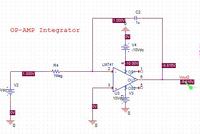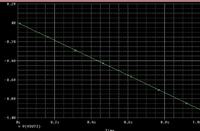waynesuvol
Newbie level 5

Hi everyone!
I am now trying to simulate the behavior of a conventional analog integrator in Pspice.
The circuit is simple, capacitor in the negative feedback loop around the ideal opamp. I attach the schematic.
I use a DC source as the input of the integrator. I just want to see the output of the opamp integrating with the constant.
BUT, the simulation result is very disappointing. The output of the opamp is clipped at the negative power supply. But what we expect is a ramp.
Is this result caused by the algorithm used by Pspice? There shouldn't be anything wrong with the circuit because it is too simple. I think it must have something to do with the method that pspice uses to solve the circuit. Please help !! Thanks a lot!!!
I am now trying to simulate the behavior of a conventional analog integrator in Pspice.
The circuit is simple, capacitor in the negative feedback loop around the ideal opamp. I attach the schematic.
I use a DC source as the input of the integrator. I just want to see the output of the opamp integrating with the constant.
BUT, the simulation result is very disappointing. The output of the opamp is clipped at the negative power supply. But what we expect is a ramp.
Is this result caused by the algorithm used by Pspice? There shouldn't be anything wrong with the circuit because it is too simple. I think it must have something to do with the method that pspice uses to solve the circuit. Please help !! Thanks a lot!!!







